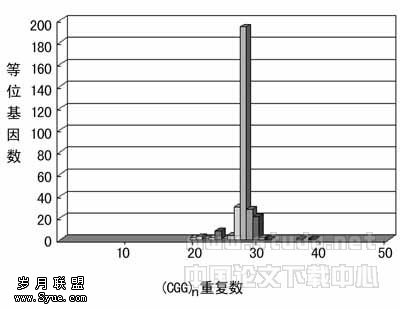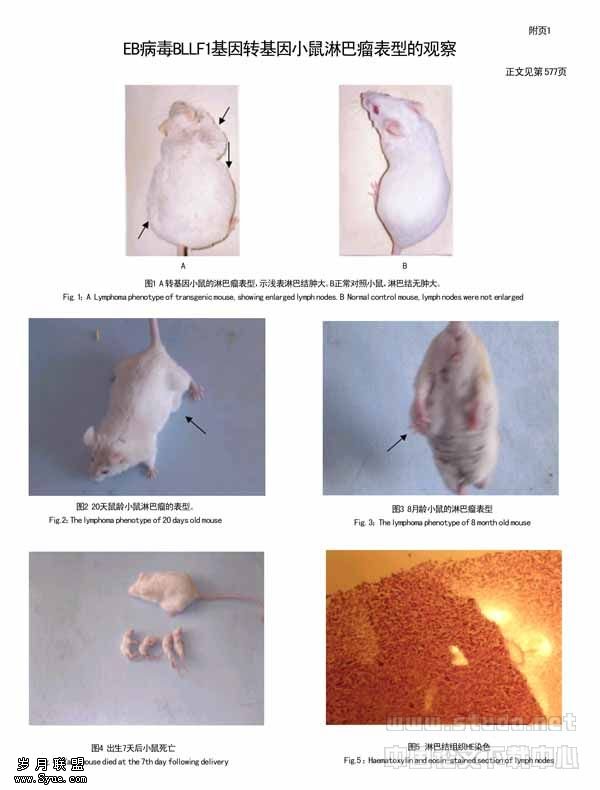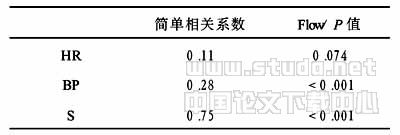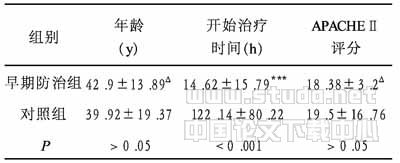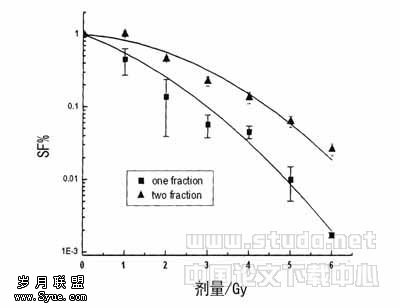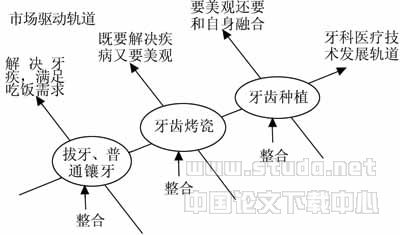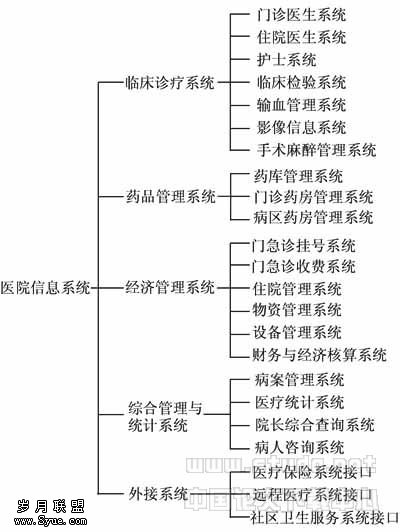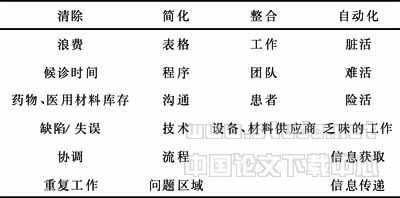T-Cell/Histiocyte-Rich B-Cell Lymphoma: Biology, Diagnosis,
【关键词】 DLBCL,•,Lymphoma,•,Tumor-infiltrating,lymphocytes,•,Nodular,lymphocyte-predominant,Hodgkin’s,lymphoma,•,Hodgkin’s,disease
LEARNING OBJECTIVES
After completing this course, the reader will be able to:
Distinguish T/HRBCL from other lymphomas based on clinical characteristics.
Distinguish T/HRBCL from other lymphomas based on immunohistochemical features.
Discuss the importance of a prompt diagnosis of T/HRBCL and select an appropriate treatment.
ABSTRACT
T-cell/histiocyte-rich B-cell lymphoma (T/HRBCL) is an uncommon morphologic variant of diffuse large B-cell lymphoma (DLBCL). Pathologically, it is distinguished by <10% malignant B cells amid a majority population of reactive T lymphocytes and histiocytes. Diagnosis of this entity is occasionally difficult, as it may appear similar to other lymphoid diseases, such as nodular lymphocyte-predominant Hodgkin’s lymphoma and classic Hodgkin’s lymphoma. Accurate diagnosis therefore rests with careful immunohistochemical analysis of the tumor cells and the inflammatory microenvironment. Clinically, T/HRBCL occurs in younger patients, predominantly affects men, and involves the liver, spleen, and bone marrow with greater frequency than traditional DLBCL. Despite the unique clinical features and robust host inflammatory response, T/HRBCL follows a natural history similar to those of other DLBCLs and responds similarly to therapy. Recent gene expression analysis demonstrates that a productive relationship with the host immune response may extend beyond this small DLBCL variant to include as many as one third of all DLBCLs. At present, T/HRBCL should be treated similarly to other stage-matched DLBCLs, though future therapies will likely be targeted at the relationship of the tumor cells with their inflammatory microenvironment.
INTRODUCTION
Diffuse large B-cell lymphoma (DLBCL) is the most common lymphoid malignancy in adults, accounting for approximately 30,000 new cases each year in the United States, or about 40% of all non-Hodgkin’s lymphomas (NHLs) [1]. T-cell/histiocyte-rich B-cell lymphoma (T/HRBCL) is an uncommon morphologic variant of DLBCL [2], representing 1%3% of all DLBCLs in recent series [36]. The entity was first described as "T-cell-rich B-cell lymphoma" in 1988 by Ramsay et al. [7], who reported five cases that had previously been misdiagnosed as peripheral T-cell lymphoma because of the presence of a majority T-cell population surrounding scant large B cells. The definition was later expanded in 1992 by Delabie et al. [8] who introduced the term "histiocyte-rich B-cell lymphoma" in describing six cases of large B-cell lymphoma notable for minimal neoplastic B cells amid a prominent infiltrate of histiocytes and small lymphocytes [7]. Several series have evaluated this entity since its original description, though interpretation of these studies is hindered by their retrospective nature, small patient numbers, lack of uniform definitions, inclusion of alternative diagnoses, and inconsistent therapeutic approaches (Table 1).
T/HRBCL has attracted considerable attention as a result of the historically difficult task of distinguishing it from similar-appearing neoplasms, such as nodular lymphocyte predominant Hodgkin’s lymphoma (NLPHL) and classical Hodgkin’s lymphoma (cHL) (Fig. 1). Such histologic similarities have pointed to overlapping biologic mechanisms of tumor growth and survival across these lymphoid diseases, [811] and have provided insight into the relationship between lymphomas and their microenvironment. This review discusses the clinical and biological differences between T/HRBCL and other DLBCLs, as well as the distinguishing features and overlapping biology with related lymphoid neoplasms. Such an understanding is essential in the appropriate diagnosis and management of these patients.
CLINICAL PRESENTATION
T/HRBCL was originally separated as a unique subset of DLBCLs because of distinct histologic features (Fig. 1). Since that time, however, clinical distinctions have likewise become apparent (Table 1). T/HRBCL occurs at a younger age than traditional DLBCL, with a median age in the fourth decade of life [5, 9, 1214] compared with the sixth decade for DLBCLs as a whole [1]. A male predominance has been noted in most series, in the range of 57%88% [5, 1217], contrasting with DLBCL, which occurs roughly equally in men and women [1]. Several series have suggested a propensity of T/HRBCL to present with advanced Ann Arbor stage, multiple extranodal sites, and an elevated lactate dehydrogenase level (LDH), though these differences were not significant from traditional DLBCLs in two small case-controlled analyses (Table 1) [5, 10, 12, 14, 15, 17, 18]. Most series suggest, however, that T/HRBCL infiltrates the spleen, liver, and bone marrow with greater frequency than DLBCL (Table 1). Involvement of the spleen and liver has been reported in 43%60% and 33%40% of patients, respectively [5, 12, 14]. Bone marrow involvement occurs in approximately one third of patients with T/HRBCL, which is considerably higher than in their traditional DLBCL counterparts [1, 5, 12, 14, 17]. T/HRBCL patients also appear more likely to develop "B" symptoms (unexplained fever >38°C, drenching night sweats, and unexplained weight loss >10% of body weight over a 6-month period), with rates reported as high as 62% [1, 12, 17].
Clinical differences also exist between T/HRBCL and the Hodgkin’s lymphoma entities cHL and NLPHL. cHL traditionally occurs at a younger age than T/HRBCL, with a median onset in the second and third decades of life [19]. There is, however, a smaller second peak in the fifth decade that is most commonly associated with the mixed cellularity subtype of cHL [19]. There is a slight male predominance overall in cHL, with a marked male predominance within the lymphocyte-rich subtype [19]. cHL is more likely to present at a limited stage than T/HRBCL [15, 19], and both diseases have a significant rate of systemic B symptoms. Patients with NLPHL also tend to be younger than patients with T/HRBCL and rarely present with advanced stage disease or B symptoms [9, 20]. Like T/HRBCL and lymphocyte-rich cHL, NLPHL shows a predilection for men [9, 20].
PROGNOSIS AND TREATMENT
Clinical behavior and response to therapy in T/HRBCL are difficult to glean from published series, as most have included cases that were originally misdiagnosed and subsequently treated for other diseases. Some series have suggested a worse outcome for T/HRBCL than for other DLBCLs [8,10,21], though these series may have included patients who were treated with less aggressive therapy than traditionally appropriate for aggressive NHL. They also may have included a disproportionate population of high-risk patients, as most were not adjusted for International Prognostic Index (IPI) score. When treated for aggressive NHL with anthracycline-containing chemotherapy such as CHOP (cyclophosphamide, doxorubicin, vincristine, and prednisone), however, most series demonstrate similar outcomes for T/HRBCL and traditional DLBCL patients (Table 1) [12, 17, 18, 22, 23]. Recent series have shown complete response rates to CHOP-like therapy in the range of 56%63% [5, 12, 14], with 3-year and 5-year overall survival rates estimated at 50%64% [12, 14] and 45%58% [5, 14], respectively. Two case-controlled analyses have been performed between T/HRBCL and DLBCL, also with no difference in overall survival observed (Table 1) [5, 12].
Given these data, T/HRBCL should be treated aggressively with anthracycline-containing chemotherapy, as appropriate for any DLBCL. It is worth noting that published series of T/HRBCL likely underestimate modern response rates and survival as they all predated the introduction of the anti-CD20 monoclonal antibody rituximab, which has shown a survival benefit when added to chemotherapy in both young and elderly patients with DLBCL [6, 24, 25]. The detailed treatment of DLBCL has recently been reviewed elsewhere [26, 27]. Importantly, several series have shown that T/HRBCL patients misdiagnosed and treated for alternative diagnoses, such as cHL or low-grade NHL, do quite poorly, highlighting the necessity of accurate initial diagnosis [12, 17, 18, 22].
PATHOLOGIC DIAGNOSIS
Accurate diagnosis of T/HRBCL requires pathologists skilled at differentiating it from histologically similar lymphoproliferative disorders (Fig. 1). In so doing, attention must be paid to the neoplastic cells as well as the inflammatory infiltrate that serves as the sine qua non of this DLBCL variant (Table 2). Inclusion criteria in the published literature on this disorder vary widely (Table 1), making it difficult to draw broad conclusions and highlighting the need for formal diagnostic criteria. In 2001, the World Health Organization (WHO) formally defined T/HRBCL as a morphologic variant of DLBCL characterized by fewer than 10% large neoplastic B cells amid a prominent inflammatory infiltrate, the majority of which are small polyclonal T cells, with or without the presence of histiocytes [2].
On low-power examination, the nodal architecture is usually completely effaced with a diffuse pattern of tumor infiltration, though vague nodularity may be apparent, creating the potential for confusion with NLPHL [2, 5, 9, 12, 14]. Morphologically, the neoplastic cells show great variability among affected patients. They may resemble the traditional centroblastic or immunoblastic cells of DLBCL, or alternatively, may resemble the Hodgkin Reed-Sternberg (HRS) cells of cHL or the lymphocytic and histiocytic (L&H) "popcorn" cells of NLPHL. Interestingly, one series found that 37% of cases had more than one neoplastic cell morphology predominating within any given tumor [13].
On immunohistochemical (IHC) analysis (Fig. 2), malignant B cells of T/HRBCL mark positively for CD45, CD20, and the B-cell transcription factors PAX5/BSAP, OCT2, and BOB1 [9, 13, 15, 20]. The cells are uniformly negative for CD15 and only rarely show weak positivity for CD30 [5, 1214, 16, 17, 28]. CD5 and CD138 are uniformly negative [13, 15]. Bcl-6 and CD79a are expressed by the majority of tumors [1316, 29]. CD10 is positive in only a minority of cases [1316]. Bcl-2 expression, a poor prognostic finding in DLBCL [30, 31], has been reported in 14%50% of tumors, though the classic IgH/bcl-2 gene rearrangement is rare [9, 10, 1316, 23]. Studies have shown significant variability in the expression of other markers such as surface immunoglobulin (sIg) [20, 32], J-chain [20, 32], and epithelial membrane antigen (EMA) [9, 1316, 21]. Association with Epstein-Barr virus has only rarely been observed in T/HRBCL and has been associated with a cHL-like phenotype, suggesting a biologic overlap or "gray zone" between these entities [16].
Background cells in T/HRBCL are small polyclonal T cells that are positive for CD3 and CD45RO and may be either CD4+ or CD8+ (Fig. 2) [9, 10, 21, 28, 33]. CD68+ histiocytes may be abundant (Fig. 2). The inflammatory response is further notable for the paucity of small B cells and other reactive cells, including neutrophils, eosinophils, and plasma cells [5, 10, 12, 16, 29]. Networks of CD21+ follicular dendritic cells are also absent [10, 29].
DISTINGUISHING T/HRBCL FROM OTHER ENTITIES
Both early and recently published series have included patients originally misdiagnosed with other lymphoproliferative diseases. Modern pathologic techniques have made many of these cases readily distinguishable, though some potential for confusion remains. The most commonly confused entities in the literature are cHL [5, 10, 14, 17, 18, 21], NLPHL [5, 10, 14, 17, 2123], peripheral T-cell lymphoma [17, 28], and indolent NHLs [17, 23, 28].
cHL may be mistaken for T/HRBCL given the similarly scant neoplastic cells and robust associated host inflammatory response (Fig. 1). The matter is further complicated by the occasional presence of HRS-like neoplastic cells in T/HRBCL and the dominant small T-cell population that characterizes the lymphocyte-rich variant of cHL. The distinction is most easily made via IHC of the neoplastic cells (Fig. 2, Table 2). The majority of HRS cells are negative for CD45, CD20, and CD79a and positive for CD15 and CD30 [15, 19], while the neoplastic B cells of T/HRBCL can be expected to mark the opposite. The reactive cells in most cases of cHL include a significant number of small B cells as well as other inflammatory cells, including eosinophils, neutrophils, and plasma cells, all of which are distinctly uncommon in T/HRBCL [19]. Of note, the reactive cells in the lymphocyte-rich variant of cHL may look very similar to those of T/HRBCL, with abundant small T cells and a paucity of other reactive cells, though IHC of the neoplastic cells still mark as traditional HRS cells, thus distinguishing it from T/HRBCL (Table 2) [15, 19].
NLPHL is an uncommon subtype of Hodgkin’s lymphoma accounting for approximately 5% of all cases [20]. It has been distinguished from the four subtypes of cHL (nodular sclerosis, mixed cellularity, lymphocyte-rich, and lymphocyte-depleted) as a result of differences in clinical behavior and biology. NLPHL presents at a limited stage in the majority of cases, shows a male predominance, and follows a remarkably indolent natural history [20]. Most cases involve nodal sites while sparing the mediastinum [34]. This entity may be mistaken histologically for T/HRBCL (Fig. 1) even with modern immunohistochemical techniques (Table 2). As the name implies, a nodular pattern is characteristic of NLPHL, while T/HRBCL tends to be diffuse. That said, a vague nodularity has been reported in as many as three quarters of T/HRBCLs [29], so other diagnostic considerations are required. Unlike the HRS cells of cHL, the neoplastic L&H cells of NLPHL mark similarly to the malignant B cells of T/HRBCL. They are characteristically positive for CD45, CD20, and CD79a, and negative for the traditional Hodgkin’s markers CD15 and CD30 [20]. The B-cell transcription factors OCT2 and BOB1 are uniformly positive in both THRBCL and NLPHL but usually negative in cHL [20]. The B-cell transcription factor PU.1, on the other hand, has been reported to be more frequently positive in NLPHL than in both T/HRBCL and cHL, creating a helpful distinguishing feature [9, 10, 32, 35]. Given the similarity of the neoplastic B cells in these diseases, accurate diagnosis rests on careful analysis of the reactive cell population. NLPHL is characterized by a more pleiotropic immune response than T/HRBCL, with a dominance of small polyclonal B lymphocytes in addition to other inflammatory cells [9, 10, 19, 20]. Rosettes of CD57+ T lymphocytes commonly surround the neoplastic L&H cells in NLPHL [15, 20], though such rosettes are not seen within the reactive T-cell population of T/HRBCL [9, 10, 15]. Networks of CD21+ follicular dendritic cells are at least partially preserved in NLPHL but uniformly absent in T/HRBCL [9, 10, 20, 29, 32].
BIOLOGY OF T/HRBCL AND RELATED ENTITIES
Histologic similarities between T/HRBCL and NLPHL reflect overlapping biology that provides insight into each of these malignancies and warrants further elucidation. The neoplastic cells of T/HRBCL and NLPHL both derive from germinal center B cells [36, 37]. There have been numerous cases reported of both entities occurring within the same patient, either sequentially or concurrently, as well as manifesting within the same family [10, 38]. Features of both T/HRBCL and NLPHL have even been identified within a single site of disease in a given patient [9, 10]. Interestingly, despite T/HRBCL being an uncommon variant of NHL, it has been found to be the most common subtype to occur following treatment for NLPHL [10]. In patients with sequential disease, the histologic appearance of T/HRBCL features has been associated with clinical disease progression and aggressive behavior [10]. It has been suggested based on the aforementioned evidence that NLPHL may transform into the more aggressive T/HRBCL, not unlike the transformation of follicular lymphoma into DLBCL, or a Richter’s transformation of chronic lymphocytic leukemia (CLL). Loss of expression of the transcription factor PU.1 has been suggested to be a marker of disease progression and perhaps is even involved in the pathogenesis of transformation [10].
Alternatively, these entities may arise independently from the same malignant clone. Indeed, a patient with concurrent T/HRBCL and NLPHL was found on careful molecular analysis to have both tumors derived from the same transformed B cell [11]. Similarly, cHL and T/HRBCL have also been noted to occur rarely in the same individual and also to be derived from the same malignant germinal center B cell [39]. Arguing against direct transformation is the observation that T/HRBCL may precede the appearance of NLPHL [10]. Further, microdissection of tumor cells from T/HRBCL and NLPHL has shown twice as many chromosomal imbalances in NLPHL than in T/HRBCL and that recurring chromosomal events did not overlap between the two groups [10]. Though it cannot be ruled out that a small subset of T/HRBCLs progress directly from NLPHL, these data are more suggestive that these tumors originate independently from a common malignant germinal B-cell clone. The existence of rare tumors sharing histologic features of both T/HRBCL and NLPHL within a single site of disease also suggests the existence of a "gray zone" lymphoma sharing biologic features of both diseases [9, 10].
Given the clinical, histologic, and genetic heterogeneity observed within T/HRBCLs, multiple subtypes may exist within this uncommon entity, all arising from a heterogeneous population of B lymphocytes. These subsets may share features with NLPHL, cHL, or traditional DLBCL. For example, T/HRBCLs with HRS-like neoplastic B cells appear more likely to coexpress CD30, a characteristic marker of cHL [16], while those tumors with neoplastic cells resembling L&H cells may be more likely to coexpress EMA, a feature commonly ascribed to NLPHL [16]. Significant heterogeneity has also been observed within DLBCLs as a whole. Gene expression profiling (GEP) has been used to explore this heterogeneity at a molecular level. Recent GEP of newly diagnosed DLBCLs using a whole genome microarray has identified three discrete and highly reproducible subgroups based on differential transcriptional profiles [40]. These clusters have been dubbed "oxidative phosphorylation" (Ox Phos), "B-cell receptor/proliferation" (BCR), and "host response" (HR) based on the coordinate overexpression of specific genes and pathways within each group [40]. Unlike the BCR and Ox Phos clusters, the HR tumor signature is defined primarily by the reactive host inflammatory cells rather than the tumor cells themselves [40]. Histologic evaluation of this cluster demonstrates elevated numbers of infiltrating T lymphocytes. Not surprisingly, this cluster includes nearly all cases pathologically diagnosed as T/HRBCL [40]. Given the uncommon nature of this entity, however, T/HRBCLs represent only a small percentage of the HR cluster as a whole, which itself constitutes approximately one third of all DLBCLs [40]. Like T/HRBCLs, the HR-type DLBCLs occur in younger patients with greater involvement of the bone marrow and spleen [40]. Of further interest, despite the presence of a robust host inflammatory response, the HR tumors show no difference in overall survival when compared with other DLB-CLs treated with anthracycline-containing chemotherapy [40]. These findings are consistent with the lack of survival benefit seen for T/HRBCLs compared with other DLBCLs [5, 12]. These recent findings suggest that T/HRBCLs may represent a subset of a much larger group of DLBCLs possessing a distinct mechanism of lymphomagenesis, proliferation, and survival that is dependent on their relationship with the host microenvironment.
The presence of this robust population of inflammatory cells without a resultant superior outcome suggests that these tumors have developed mechanisms to evade the efficacy of the host immune response. The role of infiltrating T cells has been studied in a wide range of neoplasms with interesting results. Infiltrating T lymphocytes appear to confer prognostic benefit in several solid tumors, including colorectal cancer [41], melanoma [42], and ovarian carcinoma [43]. The presence of infiltrating T cells in follicular lymphoma has likewise been associated with a better outcome [44, 45], as well as a higher likelihood of undergoing spontaneous regression [44] and of responding to anti-idio-type vaccine therapy [46, 47]. Conversely, the infiltrating T-cell population in Hodgkin’s lymphoma has been shown to play a role in promoting growth and survival of the neoplastic HRS and L&H cells [48].
The matter has been controversial in the setting of DLBCL. Some series evaluating the significance of infiltrating T lymphocytes in DLBCL diagnostic specimens have suggested a better outcome [49, 50]. This finding is difficult to reconcile with the fact that T/HRBCLs and HR-type DLBCLs appear to have no better outcome when compared with other DLBCLs in case-controlled studies. The difference may be explained by the nature of the host immune response, which is likely of critical importance in determining whether tumor growth is inhibited or promoted by the inflammatory cells. A predominant population of effector memory CD8+ T cells has been shown to produce cytotoxic cytokines and exert an antitumor effect [41, 51], likely explaining the effective tumor immunity and better outcome of some solid tumors and follicular lymphoma. Alternatively, populations of CD4+CD25+FOXP3+ regulatory T cells suppress the efficacy of the host immune response and promote tumor survival, as has been demonstrated in the setting of Hodgkin’s lymphoma [5254]. Tumor cells in certain settings have also been shown to receive stimulatory cues directly from surrounding inflammatory cells via secreted cytokines and cellcell signaling, thus promoting tumor growth and survival [51]. Such mechanisms have been well described in the pathogenesis of Hodgkin’s lymphoma [48] and currently are being explored in these subsets of DLBCLs characterized by an apparently ineffective host inflammatory response. Therapeutic disruption of this relationship between host immune cells and lymphoma may restore effective tumor immunity and prove an exciting prospect for future therapies directed at these DLBCL subsets.
SUMMARY
T/HRBCL is an uncommon morphologic variant of DLBCL notable for its unique clinical and biological features. The defining characteristic of this disease is a robust host inflammatory response that is seemingly ineffective in providing effective immune surveillance and may even be a factor in promoting tumor growth and survival. Careful attention must be paid at the time of diagnosis to distinguishing this entity from other lymphoid neoplasms characterized by a marked host immune reaction because these diseases follow distinct natural histories and require different therapies. Like other DLBCLs, T/HRBCLs follow an aggressive clinical course, and patients should be treated similarly to their stage-matched DLBCL counterparts, with anthracycline-based chemotherapy and the anti-CD20 monoclonal antibody rituximab. Further understanding of these diseases and their interplay with the host microenvironment will provide insights into mechanisms of lymphomagenesis and tumor cell survival and identify rational targets for novel therapies.
DISCLOSURE OF POTENTIAL CONFLICTS OF INTEREST
The author indicates no potential conflicts of interest.
REFERENCES
Armitage JO, Weisenburger DD. New approach to classifying non-Hodgkin’s lymphomas: clinical features of the major histologic subtypes. Non-Hodgkin’s Lymphoma Classification Project. J Clin Oncol 1998;16 27802795.
Gatter KC, Warnke RA. Diffuse large B-cell lymphoma. In: Jaffe ES, Harris NL, Stein H et al., eds. Tumours of Haematopoietic and Lymphoid Tissues. Lyon: IARC Press, 2001:171174.
Pfreundschuh M, Trumper L, Kloess M et al. Two-weekly or 3-weekly CHOP chemotherapy with or without etoposide for the treatment of elderly patients with aggressive lymphomas: results of the NHL-B2 trial of the DSHNHL. Blood 2004;104:634641.
Pfreundschuh M, Trumper L, Kloess M et al. Two-weekly or 3-weekly CHOP chemotherapy with or without etoposide for the treatment of young patients with good-prognosis (normal LDH) aggressive lymphomas: results of the NHL-B1 trial of the DSHNHL. Blood 2004;104:626633.
Bouabdallah R, Mounier N, Guettier C et al. T-cell/histiocyte-rich large B-cell lymphomas and classical diffuse large B-cell lymphomas have similar outcome after chemotherapy: a matched-control analysis. J Clin Oncol 2003;21:12711277.
Sehn LH, Donaldson J, Chhanabhai M et al. Introduction of combined CHOP plus rituximab therapy dramatically improved outcome of diffuse large B-cell lymphoma in British Columbia. J Clin Oncol 2005;23: 50275033.
Ramsay AD, Smith WJ, Isaacson PG. T-cell-rich B-cell lymphoma. Am J Surg Pathol 1988;12:433443.
Delabie J, Vandenberghe E, Kennes C et al. Histiocyte-rich B-cell lymphoma. A distinct clinicopathologic entity possibly related to lymphocyte predominant Hodgkin’s disease, paragranuloma subtype. Am J Surg Pathol 1992;16:3748.
Boudova L, Torlakovic E, Delabie J et al. Nodular lymphocyte-predominant Hodgkin lymphoma with nodules resembling T-cell/histiocyte-rich B-cell lymphoma: differential diagnosis between nodular lymphocyte-predominant Hodgkin lymphoma and T-cell/histiocyte-rich B-cell lymphoma. Blood 2003;102:37533758.
Rudiger T, Gascoyne RD, Jaffe ES et al. Workshop on the relationship between nodular lymphocyte predominant Hodgkin’s lymphoma and T cell/histiocyte-rich B cell lymphoma. Ann Oncol 2002;13(suppl 1):4451.
Shimodaira S, Hidaka E, Katsuyama T. Clonal identity of nodular lymphocyte-predominant Hodgkin’s disease and T-cell-rich B-cell lymphoma. N Engl J Med 2000;343:11241125.
Aki H, Tuzuner N, Ongoren S et al. T-cell-rich B-cell lymphoma: a clinicopathologic study of 21 cases and comparison with 43 cases of diffuse large B-cell lymphoma. Leuk Res 2004;28:229236.
Wang J, Sun NC, Chen YY et al. T-cell/histiocyte-rich large B-cell lymphoma displays a heterogeneity similar to diffuse large B-cell lymphoma: a clinicopathologic, immunohistochemical, and molecular study of 30 cases. Appl Immunohistochem Mol Morphol 2005;13:109115.
Achten R, Verhoef G, Vanuytsel L et al. T-cell/histiocyte-rich large B-cell lymphoma: a distinct clinicopathologic entity. J Clin Oncol 2002;20:12691277.
Fraga M, Sanchez-Verde L, Forteza J et al. T-cell/histiocyte-rich large B-cell lymphoma is a disseminated aggressive neoplasm: differential diagnosis from Hodgkin’s lymphoma. Histopathology 2002;41:216229.
Lim MS, Beaty M, Sorbara L et al. T-cell/histiocyte-rich large B-cell lymphoma: a heterogeneous entity with derivation from germinal center B cells. Am J Surg Pathol 2002;26:14581466.
Greer JP, Macon WR, Lamar RE et al. T-cell-rich B-cell lymphomas: diagnosis and response to therapy of 44 patients. J Clin Oncol 1995;13: 17421750.
McBride JA, Rodriguez J, Luthra R et al. T-cell-rich B large-cell lymphoma simulating lymphocyte-rich Hodgkin’s disease. Am J Surg Pathol 1996;20:193201.
Stein H, Delsol G, Pileri A et al. Classical Hodgkin lymphoma. In: Jaffe ES, Harris NL, Stein H et al., eds. Tumours of Haematopoietic and Lymphoid Tissues. Lyon: IARC Press, 2001:244253.
Stein H, Delsol G, Pileri A et al. Nodular lymphocyte predominant Hodgkin lymphoma. In: Jaffe ES, Harris NL, Stein H et al., eds. Tumours of Haematopoietic and Lymphoid Tissues. Lyon: IARC Press, 2001:240243.
Chittal SM, Brousset P, Voigt JJ et al. Large B-cell lymphoma rich in T-cells and simulating Hodgkin’s disease. Histopathology 1991;19:211220.
Rodriguez J, Pugh WC, Cabanillas F. T-cell-rich B-cell lymphoma. Blood 1993;82:15861589.
Krishnan J, Wallberg K, Frizzera G. T-cell-rich large B-cell lymphoma. A study of 30 cases, supporting its histologic heterogeneity and lack of clinical distinctiveness. Am J Surg Pathol 1994;18:455465.
Feugier P, Van Hoof A, Sebban C et al. Long-term results of the R-CHOP study in the treatment of elderly patients with diffuse large B-cell lymphoma: a study by the Groupe d’Etude des Lymphomes de l’Adulte. J Clin Oncol 2005;23:41174126.
Pfreundschuh M, Trumper L, Gill D et al. First analysis of the completed Mabthera International (MInT) trial in young patients with low-risk diffuse large B-cell lymphoma (DLBCL): addition of rituximab to a CHOP-like regimen significantly improves outcome of all patients with the identification of a very favorable subgroup with IPI=O and no bulky disease. Blood 2004;104:48a.
Abramson JS, Shipp MA. Advances in the biology and therapy of diffuse large B-cell lymphoma: moving toward a molecularly targeted approach. Blood 2005;106:11641174.
Coiffier B. State-of-the-art therapeutics: diffuse large B-cell lymphoma. J Clin Oncol 2005;23:63876393.
Macon WR, Williams ME, Greer JP et al. T-cell-rich B-cell lymphomas. A clinicopathologic study of 19 cases. Am J Surg Pathol 1992;16:351363.
Achten R, Verhoef G, Vanuytsel L et al. Histiocyte-rich, T-cell-rich B-cell lymphoma: a distinct diffuse large B-cell lymphoma subtype showing characteristic morphologic and immunophenotypic features. Histopathology 2002;40:3145.
Gascoyne RD, Adomat SA, Krajewski S et al. Prognostic significance of Bcl-2 protein expression and bcl-2 gene rearrangement in diffuse aggressive non-Hodgkin’s lymphoma. Blood 1997;90:244251.
Kramer MH, Hermans J, Wijburg E et al. Clinical relevance of BCL2, BCL6, and MYC rearrangements in diffuse large B-cell lymphoma. Blood 1998;92 31523162.
Pileri SA, Dirnhofer S, Went P et al. Diffuse large B-cell lymphoma: one or more entities? Present controversies and possible tools for its subclassification. Histopathology 2002;41:482509.
Chittal SM, Alard C, Rossi JF et al. Further phenotypic evidence that nodular, lymphocyte-predominant Hodgkin’s disease is a large B-cell lymphoma in evolution. Am J Surg Pathol 1990;14:10241035.
Feugier P, Labouyrie E, Djeridane M et al. Comparison of initial characteristics and long-term outcome of patients with lymphocyte-predominant Hodgkin lymphoma and classical Hodgkin lymphoma at clinical stages IA and IIA prospectively treated by brief anthracycline-based chemotherapies plus extended high-dose irradiation. Blood 2004;104:26752681.
Torlakovic E, Tierens A, Dang HD et al. The transcription factor PU.1, necessary for B-cell development is expressed in lymphocyte predominance, but not classical Hodgkin’s disease. Am J Pathol 2001;159: 18071814.
Braeuninger A, Kuppers R, Strickler JG et al. Hodgkin and Reed-Sternberg cells in lymphocyte predominant Hodgkin disease represent clonal populations of germinal center-derived tumor B cells. Proc Natl Acad Sci U S A 1997;94:93379342.
Brauninger A, Kuppers R, Spieker T et al. Molecular analysis of single B cells from T-cell-rich B-cell lymphoma shows the derivation of the tumor cells from mutating germinal center B cells and exemplifies means by which immunoglobulin genes are modified in germinal center B cells. Blood 1999;93:26792687.
Miettinen M, Franssila KO, Saxen E. Hodgkin’s disease, lymphocytic predominance nodular. Increased risk for subsequent non-Hodgkin’s lymphomas. Cancer 1983;51:22932300.
Brauninger A, Hansmann ML, Strickler JG et al. Identification of common germinal-center B-cell precursors in two patients with both Hodgkin’s disease and non-Hodgkin’s lymphoma. N Engl J Med 1999;340: 12391247.
Monti S, Savage KJ, Kutok JL et al. Molecular profiling of diffuse large B-cell lymphoma identifies robust subtypes including one characterized by host inflammatory response. Blood 2005;105:18511861.
Pages F, Berger A, Camus M et al. Effector memory T cells, early metastasis, and survival in colorectal cancer. N Engl J Med 2005;353:26542666.
Clark WH Jr, Elder DE, Guerry D 4th et al. Model predicting survival in stage I melanoma based on tumor progression. J Natl Cancer Inst 1989;81:18931904.
Zhang L, Conejo-Garcia JR, Katsaros D et al. Intratumoral T cells, recurrence, and survival in epithelial ovarian cancer. N Engl J Med 2003;348:203213.
Strickler JG, Copenhaver CM, Rojas VA et al. Comparison of "host cell infiltrates" in patients with follicular lymphoma with and without spontaneous regression. Am J Clin Pathol 1988;90:257261.
Dave SS, Wright G, Tan B et al. Prediction of survival in follicular lymphoma based on molecular features of tumor-infiltrating immune cells. N Engl J Med 2004;351:21592169.
Hsu FJ, Caspar CB, Czerwinski D et al. Tumor-specific idiotype vaccines in the treatment of patients with B-cell lymphoma--long-term results of a clinical trial. Blood 1997;89:31293135.
Garcia CF, Lowder J, Meeker TC et al. Differences in "host infiltrates" among lymphoma patients treated with anti-idiotype antibodies: correlation with treatment response. J Immunol 1985;135:42524260.
Re D, Kuppers R, Diehl V. Molecular pathogenesis of Hodgkin’s lymphoma. J Clin Oncol 2005;23:63796386.
Ansell SM, Stenson M, Habermann TM et al. CD4+ T-cell immune response to large B-cell non-Hodgkin’s lymphoma predicts patient outcome. J Clin Oncol 2001;19:720726.
Lippman SM, Spier CM, Miller TP et al. Tumor-infiltrating T-lymphocytes in B-cell diffuse large cell lymphoma related to disease course. Mod Pathol 1990;3:361367.
Parmiani G. Tumor-infiltrating T cells--friend or foe of neoplastic cells? N Engl J Med 2005;353:26402641.
Curiel TJ, Coukos G, Zou L et al. Specific recruitment of regulatory T cells in ovarian carcinoma fosters immune privilege and predicts reduced survival. Nat Med 2004;10:942949.
Schaefer C, Kim GG, Albers A et al. Characteristics of CD4+CD25+ regulatory T cells in the peripheral circulation of patients with head and neck cancer. Br J Cancer 2005;92:913920.
Marshall NA, Christie LE, Munro LR et al. Immunosuppressive regulatory T cells are abundant in the reactive lymphocytes of Hodgkin lymphoma. Blood 2004;103:17551762.


